With enrollment still struggling to bounce back from a downward trend, and closures and consolidations in the news, the need for innovative strategies in higher education has never been greater. Edge’s AVP and Chief Digital Learning Officer, recently led a webinar to discuss these recent trends and what actions can be taken to navigate the evolving educational landscape. Whether an organization is looking to launch new online initiatives or enhance existing ones, employing strategies that build digital learning capacity can help boost enrollment and institutional resiliency and success.
A Closer Look at Campus Closures
During a span of time between July 2004 and June 2020, nearly 12,000 campuses abruptly closed, leaving many students unsure about their path forward to finish their education. According to research conducted by the State Higher Education Executive Officers Association (SHEEO) and the National Student Clearinghouse Research Center who analyzed 467 of these campus closures, 78% were for-profit two-year and four-year institutions, and over 20% were non-profit two-year and four-year institutions.
Affected by a $6 million deficit and a drop in enrollment, Cabrini University was among the institutions that was forced to close. Founded in 1957, the University began with 43 students and offered four major programs. Growing to over 1,700 students and 30 programs in 2021, the institution later saw a decline in enrollment in 2022. Cabrini recorded a decline of approximately 1,000 students, or half the student body, in less than a decade, forcing staff cuts and course changes. These issues combined with the financial strain led Cabrini to officially close its doors in June 2024.
The College of Saint Rose in Albany, New York closed in May 2024 after program cuts, a 37% drop in freshman enrollment, and a financial gap of over $11 million. Over the past three decades, the Board of Trustees at Saint Rose had tripled the size of the campus, spending more than $12 million to purchase 68 properties, and another $100 million to renovate and build new facilities on that land. As enrollment dropped, the private institution cut expensive programs, but the budget deficit continued to grow, and the college had to close earlier this year.
In the fall of 2012, Bloomfield College in New Jersey had 2,044 students enrolled, but that number had dropped to just over 1,000 students a decade later. The public college was recognized as the only four-year college that is a Predominantly Black Institution, Hispanic Serving Institution, and Minority Serving Institution. As the pandemic continued and Black and Hispanic populations struggled with the fallout, enrollment numbers continued to drop. In order to keep the campus open, Bloomfield merged with Montclair State University in July 2023.

The Segmentation of Higher Education
According to journalist and author Jeffrey Selingo, there are six segments of higher education institutions, each facing different levels of risk following the pandemic:
- Powerhouses (3%): Globally focused, prestigious public and private institutions that are primarily focused on research and knowledge creation. Their top concerns include research funding and attracting top talented faculty and students.
- Elites (3%): Highly selected, well-resourced liberal arts colleges who maintain selectivity around undergraduate education. They are not as focused on tuition revenue and student demand, but more about their positioning within the job-focused world to prepare students with the training and advanced skills they need to succeed.
- Strivers (10%): Private and public institutions who are looking to reach Elite or Powerhouse status but are more dependent on tuition revenue or state funding to make that transition.
- Regionals (30%): Private colleges that are generally small, tuition-dependent institutions who are heavily reliant upon a student body who is regional, if not highly localized.
- Compass Institutions (14%): Regional public universities that are dependent on local student markets and state funding.
- Community Colleges (40%): Focused locally and on the adult student market and are increasingly offering four-year degrees. Well positioned to take advantage of a workforce-focused approach to higher education.
Driving Cultural Change
Organizational culture comprises values and behaviors that shape performance where institution leaders must identify problematic aspects of the current culture and understand what changes are needed.
The E360 Assessment looks at every moving part of an institution’s technology ecosystem and pinpoints which medium and long-term changes could have the biggest impact along the digital transformation journey. “Edge can help the transition by providing the support of thought leaders and a research-driven approach to change management that puts people at the center of the process. While a change is a thing you do, a transition is a psychological step that everyone involved makes together, and we can help guide an institution throughout this evolution.”
The Need for Digital Infrastructure
In the 21st century, sustainability relies heavily upon technology as robust digital infrastructure enables higher education institutions to adapt to evolving challenges, enhance learning experiences, and maintain operational continuity.
Adopting New Education Models
In the past, the college campus was a physical place where a student enters after graduating high school and leaves when a degree is completed. Over the years, the higher education experience has evolved and the parameters have changed.
Another growing trend seen in the higher education community is partnerships between colleges and universities and their local community colleges. Together they build programs where students explore academic options and complete core courses at the community college, and then later transfer to the state school for their junior year.
Looking to enable digital transformation and streamline efficiencies within your institution? Learn how the E360 Assessment can provide a holistic view of your current-state technology program and key steps for evolving toward a more integrated and agile future. Visit njedge.net/solutions-overview/digital-transformation.


